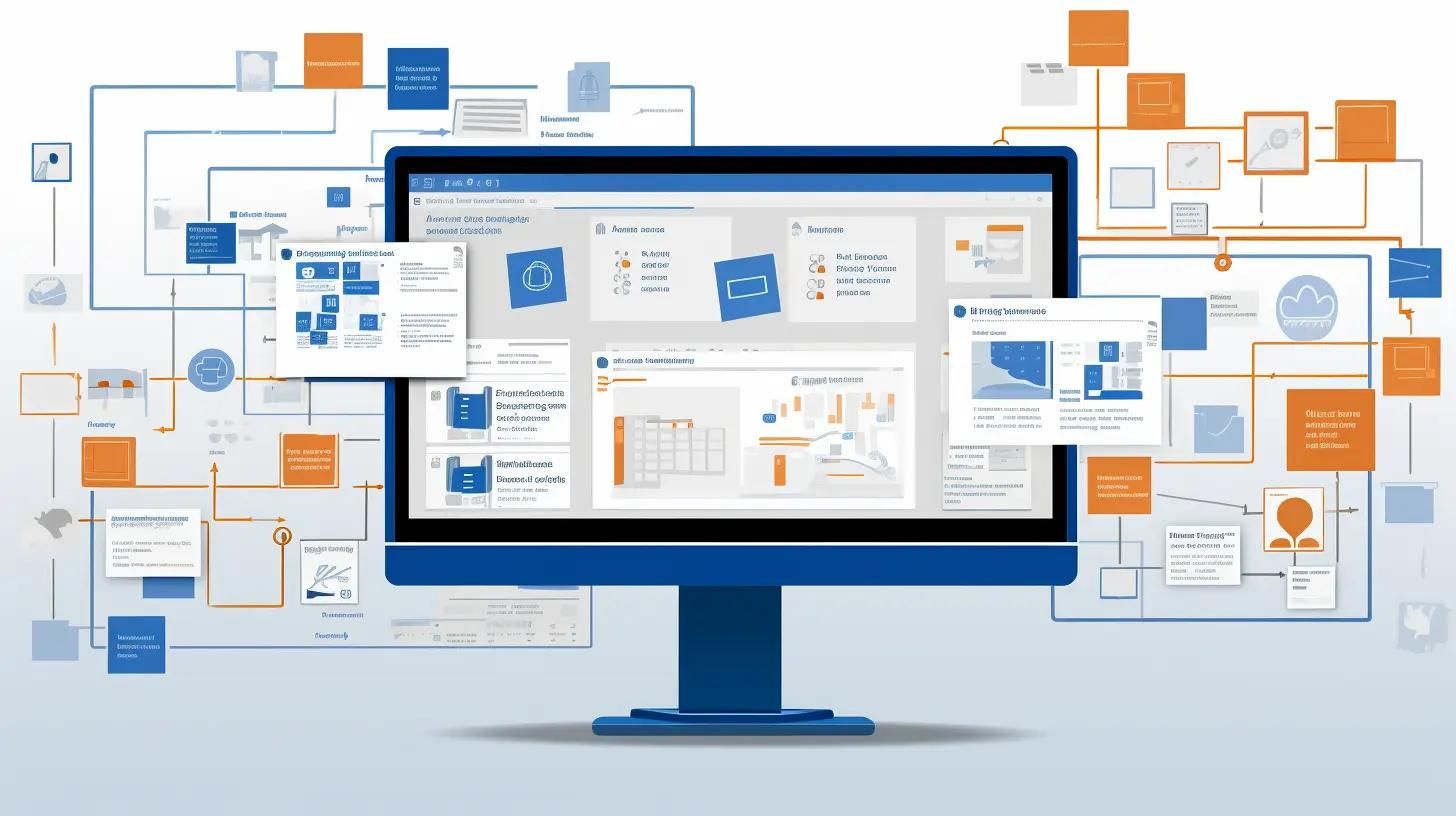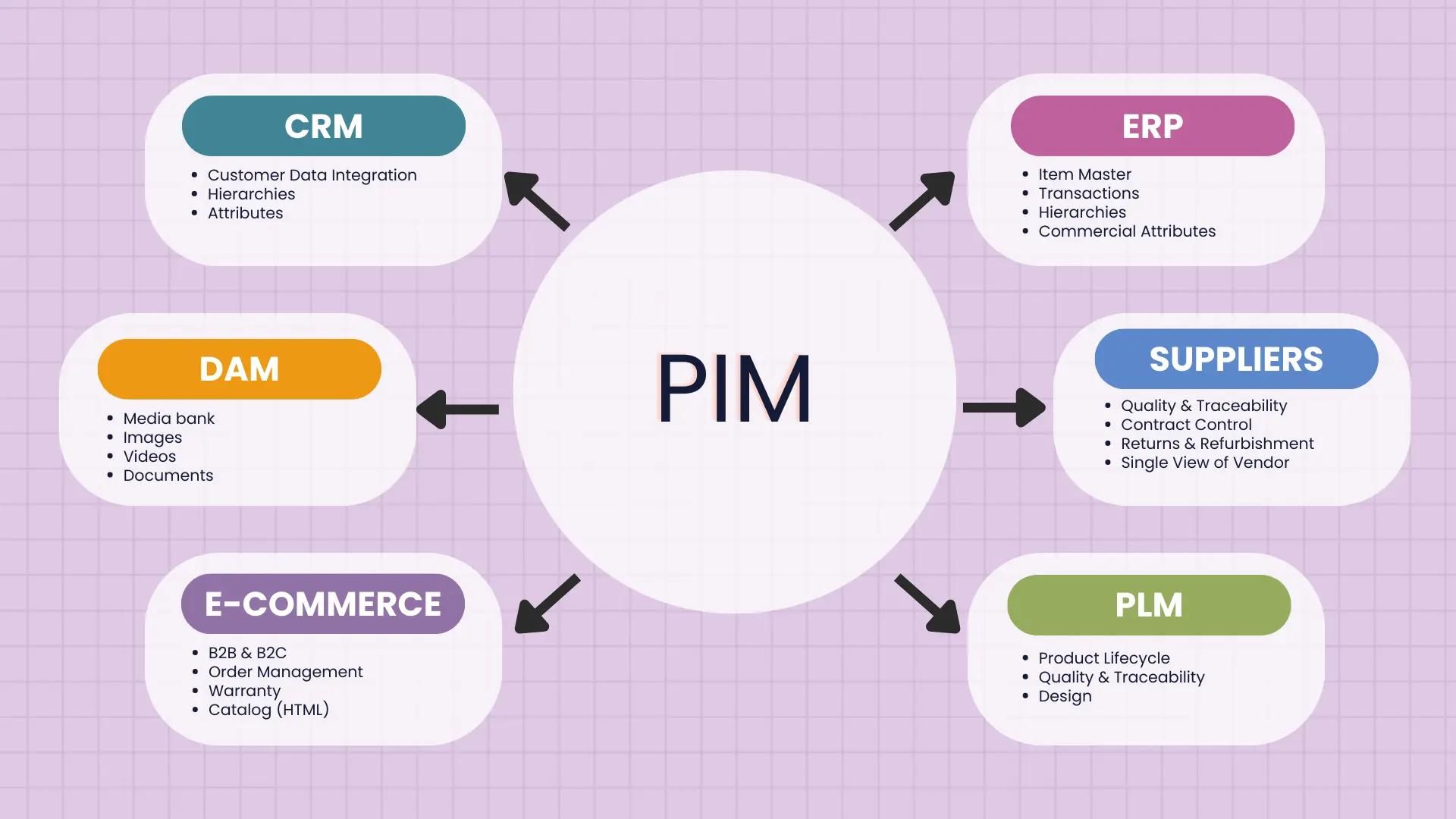- #1 Lack of Clear Strategy and Objectives
- #2 Conscious Decision when Selecting Platform
- #3 Poorly Designed Data Model
- #4 Lack of Enrichment Processes Defined
- #5 Carry Over from Old Systems
- #6 Insufficient Data Governance
- #7 Inadequate Integration with Existing Systems
- #8 Underestimating Effort to Migrate Existing Data to New PIM
- #9 Insufficient User Involvement and Training
- Early Recognition and Swift Action for Success

Pitfalls of PIM Implementation and why you should care
- #1 Lack of Clear Strategy and Objectives
- #2 Conscious Decision when Selecting Platform
- #3 Poorly Designed Data Model
- #4 Lack of Enrichment Processes Defined
- #5 Carry Over from Old Systems
- #6 Insufficient Data Governance
- #7 Inadequate Integration with Existing Systems
- #8 Underestimating Effort to Migrate Existing Data to New PIM
- #9 Insufficient User Involvement and Training
- Early Recognition and Swift Action for Success
Have you already decided that your company needs a PIM system? That's great! Now it's time to ensure your PIM implementation allows your company to enjoy it and make the process as smooth as possible. Performing PIM implementation properly is crucial. It requires careful planning, consideration of your business needs, and a well-executed strategy. Rushing into it without a clear roadmap can lead to inefficiencies and extra challenges. Approaching PIM implementation with the right expertise, resources, and a solid plan is crucial. It allows you to maximize the benefits of PIM and mitigate potential pitfalls.
Haven't made up your mind about whether you need PIM? Don't worry, we've got you covered. In our other article, "Why do you need PIM," we delve deeper into the specifics of PIM, its benefits, and why it's important for your company. Be sure to check it out for a more comprehensive understanding of PIM.
From Chaos to Control: Why do you need PIM?But why should you care about implementing PIM in your company? Let's consider the consequences of not managing product information effectively. Imagine a situation where your customers look for your product's information. Without a PIM system, they might receive incorrect information about them. This can lead to confusion, frustration, and, ultimately, a loss of trust in your brand. In today's market, building and maintaining trust with your customers is crucial. It plays a vital role in the success and growth of your business.
Furthermore, inadequate management of product information can result in lost sales. If your customers can't find information about your products, they may choose to take their business elsewhere. This can significantly impact your revenue and growth potential.
So, let's delve into the potential pitfalls of PIM implementation and why you should care. Join us as we explore the world of possible mistakes during PIM implementation. Together, we'll navigate these challenges and ensure a successful PIM implementation journey.
#1 Lack of Clear Strategy and Objectives

One of the pitfalls in implementing a PIM system is the lack of a clear strategy and objectives. It is crucial to have a well-defined plan and purpose to use PIM effectively. Without a clear strategy, businesses may struggle to fully capitalize on the benefits of a PIM system. So, before proceeding with PIM implementation, it is important for your company to define its strategy and objectives.
First, you must specify the role and responsibilities of PIM within your organization. You need to have a clear understanding of why you are implementing PIM and how it will benefit your company. It is crucial to ensure that you utilize the strengths of PIM while avoiding using it for purposes other than its intended design.
PIM is specifically designed for managing product information. It ensures accuracy, consistency, and accessibility across various channels. Trying to force PIM into tasks outside its intended scope can result in inefficiencies. For instance, using PIM as an ERP or PLM system may not yield optimal results. While PIM can integrate with other systems, it is important to recognize its core purpose. Focusing on using it to manage and distribute product information will ensure optimal results.
Additionally, it is essential to determine who will be responsible for managing the system. This includes tasks such as updating product information and ensuring its accuracy on an ongoing basis. Clear roles and responsibilities play a crucial role in streamlining processes. They help prevent duplication of efforts, leading to more efficient PIM implementation.
Aligning your PIM strategy with the business objectives is also crucial. PIM should align with and support your company's goals. These goals can include improving customer experience or expanding into new markets. By aligning the PIM strategy with these objectives, you can optimize the use of the system. This ensures that the PIM system contributes effectively to the overall success of your company.
#2 Conscious Decision when Selecting Platform
When it comes to implementing a PIM system, one of the crucial pitfalls to avoid is not making a conscious decision when selecting the platform. PIM platforms can vary in terms of their features and capabilities. You should also consider pricing and suitability for your specific business needs. It is important to consider these factors to ensure a successful implementation.

Built-in integrations
Selecting the right platform can save you valuable time during the implementation process. A well-chosen platform will have built-in integrations with other systems. Most PIM systems offer integrations with e-commerce platforms or ERP systems. By utilizing these standard integrations, you can save time during the implementation phase. Additionally, you can continue to save time throughout the lifespan of your PIM system. Your platform provider will take care of maintenance and the introduction of new features. It will free up your resources for other important tasks.
Standard features
Additionally, the chosen PIM platform may already offer essential features and functionalities. It will reduce the need for extensive customization or more development work. Selecting a platform that aligns with your needs can expedite the implementation process. It enables you to start reaping the benefits of PIM sooner and maximize the value of the system for your business.
Scalability
Another critical aspect to consider is scalability. The chosen platform should have the ability to grow and adapt along with your company's evolving needs. As your business expands and your product catalog grows. The platform should be able to handle increased data volumes and accommodate future requirements. Avoid the situation where you implement a PIM platform only to find out later that it cannot support your business needs.

Involve potential partners
Furthermore, it is important not to approach your PIM project assuming that a specific platform will best fit your needs. Instead, engage in discussions with potential partners. Share with them your current and future requirements. Their expertise and insights can provide valuable guidance in evaluating different platforms. Their role should be to help you make an informed decision.
#3 Poorly Designed Data Model

The data model plays a crucial role in PIM implementation. It defines the structure, relationships, and attributes of your product information. A well-designed data model ensures that your product data is organized. It also ensures that it is consistent and manageable. When designing the data model, it is important to consider various aspects. These include relationship types (e.g., cross-sell, up-sell) and product categorization. Data model design determines how products can be published across many channels.
Common mistakes in data modeling include storing irrelevant attributes, leading to cluttered information. It is crucial to store only attributes and relations that are relevant to product enrichment. Attributes are important in supporting search and filtering capabilities in your platform. Therefore, these attributes must be user-friendly and aligned with your business needs.
Technical aspects
There are also technical aspects to consider, such as the performance of your PIM system. Achieving satisfactory performance without compromising data integrity requires careful planning. One of the aspects is striking the right balance between data normalization and denormalization. This balance is crucial in PIM implementation.
Business aspects
When it comes to business aspects, you might be tempted to work only with products and ignore variants. While this approach may work for customers who don't deal with multi-variant products, in most cases, you may regret this decision. It limits your ability to group variants and publish products to other channels in an organized manner. But, working with a product-variant setup brings its own challenges. For example, you need to specify which attributes should be specified at the product level and which at the variant level. Storing the same information on all variants within the same product would result in lost time during enrichment.
Bad model design can be costly to fix
Fixing data model issues at later stages of the implementation is a complex task. It requires significant effort and resources. It can lead to delays, increased costs, and disruptions to your daily operations. Addressing data model issues as soon as you identify them is much more efficient and cost-effective. It allows you to resolve any potential problems and ensure smoother implementation of the PIM system.
A poorly designed data model is a pitfall to avoid in PIM implementation. A well-thought-out data model ensures the consistency and manageability of your product data. You must avoid common mistakes and consider technical and business aspects. It will set the foundation for a successful PIM implementation.
#4 Lack of Enrichment Processes Defined
There are many advantages to implementing a PIM system. The key one is the ability to define, control, and streamline product enrichment activities. Modern PIM systems offer the flexibility to divide the enrichment process into many stages. They offer review and approval sequences as well.

To illustrate this, let's imagine your PIM system as a product information factory. In that factory, there is an assembly line for product information. Major car manufacturers understand the efficiency of an assembly line. It allows them to build high volumes of cars while ensuring quality. The same principle applies to product information enrichment. This data will be reliable, up-to-date, and consistent across all channels. Standardization ensures that all users follow the same procedures. It reduces the risk of human error and maintains data consistency.
Without a defined process, the quality of your data may suffer. It becomes challenging to ensure consistency and accuracy. It might lead to potential errors, inconsistencies, and outdated information. Thus, it is crucial to avoid these mistakes to ensure a seamless omnichannel experience.
A defined enrichment process also enhances the usability of your PIM system. It enables efficient searching, filtering, and categorization of products. It makes it easier for users to find the information they need. This not only improves internal workflows but also enhances the experience of your customers. They will have a better experience when they interact with your brand across different channels.
#5 Carry Over from Old Systems
When implementing a PIM system, it's common to be tempted to carry over processes, habits, and ways of working from old systems. We often find comfort in familiar practices and approaches. But, it's important to recognize that doing so may not be beneficial in the long run. After all, you have decided to get a new PIM system for a reason. You don't want it to simply become a 2.0 version of your old system with a new fancy user interface.

It's likely that your company has some outdated processes. Processes that were created years ago and were never revisited or improved. Take the opportunity of PIM implementation to improve or even cut these processes. Perhaps some steps are no longer necessary, or some can be simplified. It's always good to look for improvements. As Elon Musk once said, "The best process is no process" and we should aim for that whenever possible.
Old PIM systems or other legacy systems may have outdated or inefficient processes. Over time, business needs evolve, technology advances, and industry best practices change. What may have worked well in the past may no longer be effective or aligned with current requirements. Carrying over these outdated processes to the new PIM system can have a limiting effect. It can restrict your ability to leverage the capabilities of the platform fully.
By re-evaluating and optimizing your processes, you can align with industry standards. This will enable you to make the most of the new platform's capabilities. This can result in improved data accuracy, streamlined operations, and faster time-to-market. Sometimes, it may be best to design processes completely from scratch. This allows you to benefit from the new platform's capabilities and features.
#6 Insufficient Data Governance
Data governance is crucial for a successful PIM implementation. It involves setting up rules and procedures to ensure the quality and accuracy of your product data. Automating the data governance process is highly recommended.

Insufficient data governance can have a significant impact on the integrity of your data. Without proper governance, your product information may become inconsistent, inaccurate, or incomplete. This can create confusion among your customers. Consequently, it can frustrate them and lead to a negative perception of your brand.
Standarization
One common challenge is the absence of data standards. It's crucial to establish those for all teams and departments. By doing that, you will ensure consistent product information across channels. For example, each team may use different naming conventions or attribute formats. This can make it challenging to maintain a unified and coherent product dataset.
Validation
Another issue arises from the lack of data validation and cleansing processes. Without these processes, errors or inconsistencies in your product data can go unnoticed. This can result in the dissemination of incorrect or misleading information. As a consequence, it can lead to customer dissatisfaction and potential loss of sales.
#7 Inadequate Integration with Existing Systems

PIM is an invaluable tool for managing product information. But, its effectiveness relies on integration with other systems. Integrating PIM with platforms such as DAM, ERP, e-commerce, and PLM is crucial. It enables the smooth exchange of product information between systems. It also allows you to ensure data consistency and accuracy. Defining these integrations at the early stages of implementation is essential. It allows you to unlock the full potential of your PIM platform.
Unified integration strategy
In many PIM implementations, integrating with many platforms is necessary. You can fully leverage their capabilities and ensure a seamless flow of product information. But, it is important to avoid reinventing the wheel with each integration. Establishing a clear integration strategy for both inbound and outbound flows is advisable. This approach saves time during implementation. It also enhances the long-term maintainability of your system.
Integration platform
Creating an integration platform can be beneficial in some cases. One of the advantages is that it allows for the development of platform-agnostic integrations. These integrations provide future flexibility and avoid rigid dependencies between your platforms. This means that replacing your ERP system will not affect your PIM system. You must ensure that the new ERP will follow the existing data contract.
Seamless e-commerce integration
The integration between PIM and your e-commerce platform is often the most critical. This integration enables the publication of your product information to your customers. Leveraging the capabilities of automated integration reduces time-to-market and increases sales opportunities. Thus, it is crucial to ensure that this integration meets your specific business needs. An unreliable integration between systems can harm data consistency. This, in turn, can lead to frustration within your company.
Define data owners
Since many systems may contain parts of your product data, some data redundancy is expected. This redundancy simplifies working with products. Attributes like name and description are readily available, making product management more efficient. But, it is vital to choose a system that owns specific attributes. For instance, your ERP system should not change product descriptions. Another example is that your PLM team should not alter images. Ensuring that such attributes cannot be modified in systems where they should remain unchanged is a good practice.
#8 Underestimating Effort to Migrate Existing Data to New PIM

Migrating your existing product data to a new PIM platform can be a complex undertaking. It involves transferring a significant amount of product information from various sources. This process requires careful planning and execution to ensure a successful migration.
Custom tool for the rescue
One reason why data migration can be time-consuming is that each dataset may have its unique structure and format. This means custom tools may be needed to accurately transform and map the data to fit the new PIM system. Developing these tools requires extra time and effort during the implementation process. While these tools are only used once, it is crucial to allocate enough time for their implementation and testing to avoid any delays.
Clean up the data
Not all data needs to be migrated to the new PIM system. It is essential to evaluate the relevance and quality of the existing data. Only migrate the data that is essential for your business operations. This presents an opportunity to remove outdated and unnecessary information. It ensures a clean and efficient data sheet as you embark on your PIM journey.
Many becomes one
Migrating data from many sources can bring extra challenges. It is common to encounter duplicated entries or inconsistencies in product information. In such cases, it is important to determine which system should take precedence when merging the data. This becomes particularly complex if your company consists of many units. It means you will be working with independent datasets that need to be merged into a unified system. One of the main challenges is ensuring that each product has a unique identifier across all units and systems.
#9 Insufficient User Involvement and Training

User involvement and training play a crucial role in the successful implementation of a PIM system. It is essential to emphasize the importance of user adoption and engagement right from the beginning.
Involve stakeholders
During the different phases of PIM implementation, involving end users is essential. Most companies achieve that by determining a group of stakeholders. They take part in the implementation process from the beginning. Their feedback and insights are valuable in shaping the system. It will allow it to meet their needs and expectations. By including end users, you can gain a better understanding of their workflows, challenges, and requirements. This allows for a more tailored and user-friendly PIM system. What’s more, end users often possess valuable knowledge about the organization's business flows.
Train users
Insufficient end-user training can have significant implications as well. When users are not adequately trained on the new system, they may not be aware of all its features and capabilities. This can result in underutilization of the system's functionalities. It may limit the benefits it can provide. Furthermore, users may continue to use the new PIM system in the same way they used the old system. They will miss out on the efficiencies and improvements offered by the new platform. User training should consist of two parts:
- Platform training - focusing on the PIM platform's features and best practices
- Process training - focusing on the user's role and responsibilities
Early Recognition and Swift Action for Success

Implementing a PIM system can bring significant benefits to your business operations. However, it's essential to be aware of the potential pitfalls that can arise during the implementation process. To ensure a successful implementation, it is crucial to address these pitfalls promptly. Involving the right stakeholders will help you achieve that.
If you come across any of these pitfalls during the project, it is advisable to take a step back and reevaluate the situation. Although it may cause a delay in your project, it is better to address these issues sooner rather than later. Attempting to fix them in a live system can be a costly endeavor in terms of time and resources.
By understanding these pitfalls, you can take proactive measures to mitigate them. This will set your PIM implementation on the right track for success. Remember, the implementation of a PIM system presents a great opportunity for your company. It's crucial to maximize its benefits by taking the necessary steps for a successful implementation.
With this knowledge in mind, I hope you can navigate the implementation process smoothly. Let's unlock the full potential of a PIM system for your business. Good luck on your PIM journey!
Ask us any question
We will respond within 8 hours and guide you in the right direction.
Your data is safe with us. We will not share your email with anyone, and we will use it only to contact you regarding your inquiry.
